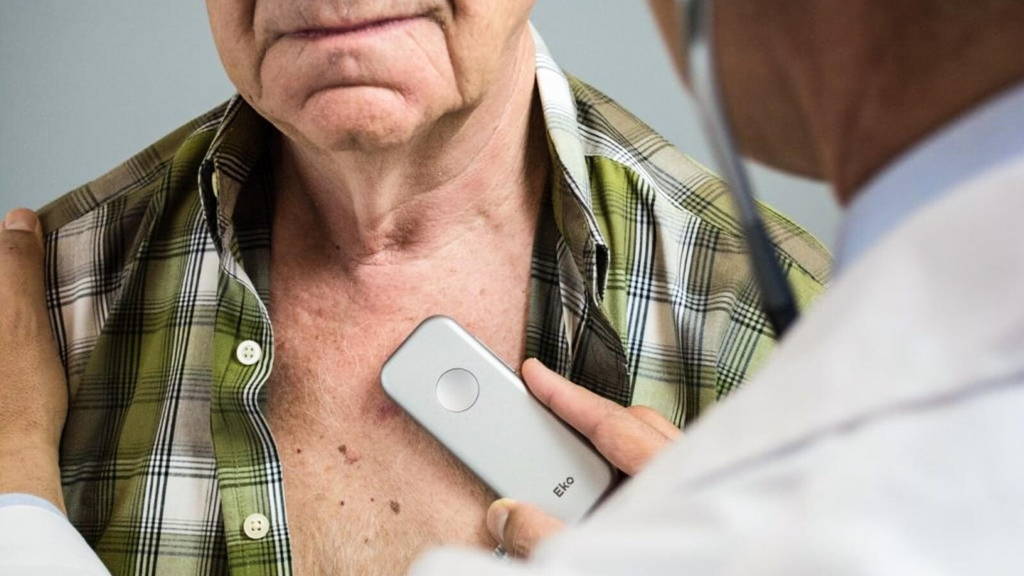DUO makes it possible to continuously keep tabs on patients at risk for heart failure. The electronic stethoscope can be used both at home and at the bedside. This means that patients can improve their self-care and alert a professional whenever they deem it necessary. DUO combines ECG and digital stethoscope technology into a portable, handheld device. The device has been cleared by FDA.
The electronic stethoscope has a wireless BlueTooth connection and supports software for both iOS and Android devices. It also features an audio jack on the bottom, to make it possible to plug in either headphones, external speakers, or a traditional stethoscope earpiece that comes along in the product box.
Both CORE and DUO use Eko’s software platform, developed to enable live streaming of cardiopulmonary sound and ECG on any device.
The company is now working on building machine-learning algorithms that helps track heart failure. The company hopes to provide patients with ways to improve their self-care. Their devices to remotely monitor the heart should make earlier intervention possible, by enabling continuous care.
Stethoscope gone digital
DUO doesn’t really differ from a normal stethoscope. It measures heart sounds and analyses cardiac or pulmonary function. There’s just one big change: DUO digitalises the good-old stethoscope. When a patient or professional places DUO on the patient’s chest, it automatically provides an ECG on the accompanying mobile app. The chart is available on the app for both patient and doctor, depending on who is using the device. When used remotely by a patient, he or she can share their heart and lung sounds, as well as the ECG chart, with their doctors. The data can be transferred to a hospitals electronic medical records (EMR) to keep on file.
The electronic stethoscope has a wireless BlueTooth connection and supports software for both iOS and Android devices. It also features an audio jack on the bottom, to make it possible to plug in either headphones, external speakers, or a traditional stethoscope earpiece that comes along in the product box.
Remote heart monitoring
DUO is the second digital stethoscope by Eko. CORE —which is their first smart stethoscope — enhances a normal stethoscope, by giving physicians a way to turn up the volume. The device has to be connected to an existing stethoscope. It is now used in over 700 institutions worldwide.
Both CORE and DUO use Eko’s software platform, developed to enable live streaming of cardiopulmonary sound and ECG on any device.
The company is now working on building machine-learning algorithms that helps track heart failure. The company hopes to provide patients with ways to improve their self-care. Their devices to remotely monitor the heart should make earlier intervention possible, by enabling continuous care.






